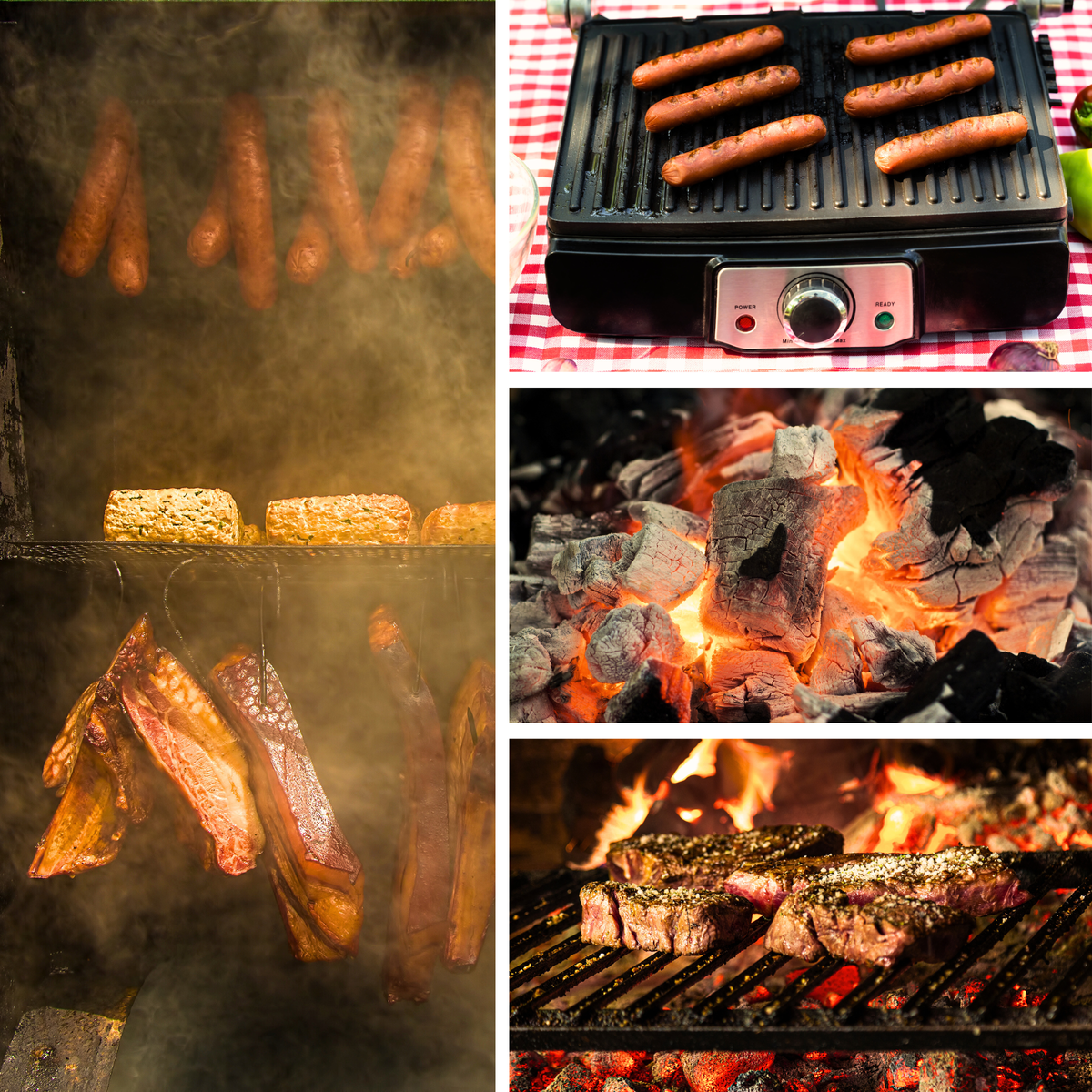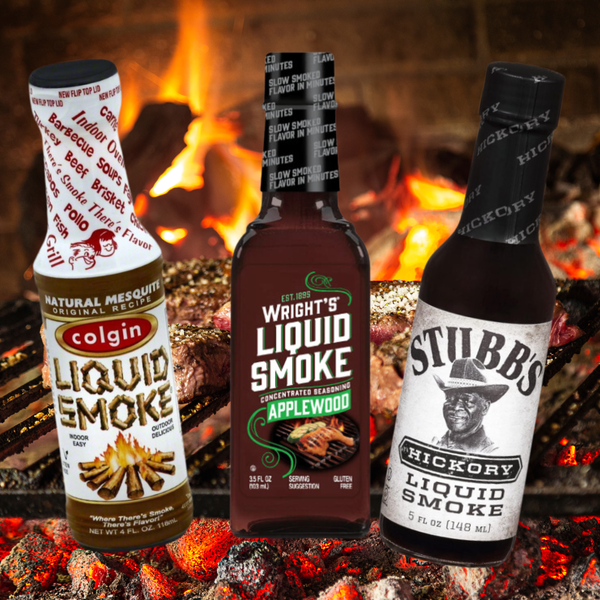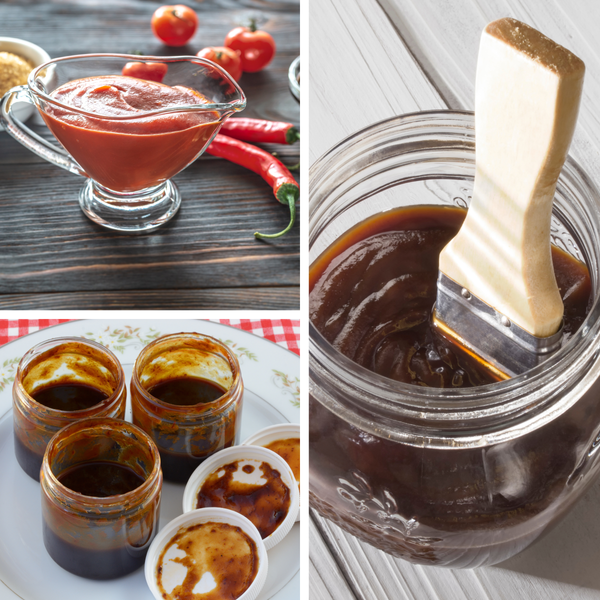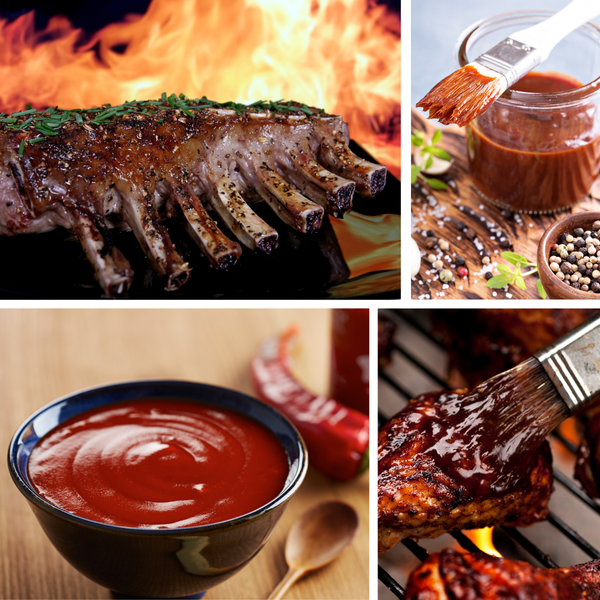Grilling is an art form, a tradition, and for many, the ultimate way to cook. Whether you're a seasoned pitmaster or a weekend warrior, understanding the different types of grilling can elevate your outdoor cooking game. In this comprehensive guide, we'll explore the three primary types of grilling, each with its unique characteristics and methods.
Key Takeaways:
- Discover the distinct features of the three main types of grilling: direct, indirect, and two-zone.
- Learn about the various grills and fuel types associated with each grilling method.
- Gain practical tips for choosing the right type of grilling for your next barbecue.
Direct Heat Grilling: The Fast Lane to Flavor
Direct heat grilling is the most straightforward and commonly used method. It involves cooking food directly over the heat source, which can be burning charcoal, gas flames, or electric elements. This method is perfect for foods that are cooked quickly, such as hot dogs, chicken wings, and other smaller cuts of meat that benefit from high heat and fast cooking times.
Most gas grills and portable grills are designed for this type of grilling, offering simple control knobs for temperature adjustments. The direct heat creates those iconic grill marks and a seared crust that locks in juices, resulting in juicier meats. Gas grills ignite quickly and typically feature wheels for easy mobility, making them a convenient choice for many grill enthusiasts.
Indirect Heat Grilling: Low and Slow
Indirect heat grilling is a technique where the food is not placed directly over the heat source. Instead, it's cooked next to the heat, allowing for lower temperatures and longer cooking times. This method is ideal for larger cuts of meat like beef ribs or a whole chicken that need to be cooked slowly to break down connective tissues and fats, resulting in tender and flavorful dishes.
Charcoal grills and kamado grills are often used for indirect grilling. These grills burn charcoal briquettes or natural hardwood lump charcoal, which can be arranged to create a heat zone and a cooler zone. A drip pan is typically placed beneath the food to catch any drippings, preventing flare-ups and allowing for a natural cooking process that imbues the meat with a classic barbecue taste.
Two-Zone Grilling: The Best of Both Worlds
Two-zone grilling is a versatile approach that combines direct and indirect heat. By setting up your grill with a hot zone and a cooler zone, you can sear food over direct heat to create a crust, then move it to the cooler side to finish cooking through indirect heat. This method offers excellent control over the cooking process, making it suitable for a variety of foods, from vegetables to larger cuts of meat.
Many outdoor grills, including gas or charcoal grills, can be configured for two-zone grilling. This technique allows adventurous grillers to experiment with different cooking methods, temperatures, and times to achieve the perfect balance of texture and flavor. It's also a great way to manage flare-ups and ensure even cooking for foods that require more attention.
The Fuel Behind the Fire: Choosing Your Heat Source
The heat source is a critical factor in grilling. Traditional grill enthusiasts often prefer the smoky flavor imparted by burning charcoal or wood chips. Charcoal grills and kamado grills, known for their enormous heating capacity, are typically cheaper than other grills and use less charcoal, making them a favorite for those seeking a natural wood smoke taste.
On the other hand, gas grills, including propane grills and natural gas models, offer faster cooking and easier temperature control. These grills are connected to either smaller portable propane tanks or a home's natural gas line, providing a consistent and easily adjustable heat source. Most gas grills also come with side burners and rotisserie kits, adding to their versatility.
Grilling Techniques: Mastering the Charcoal Grill
Charcoal grilling is often lauded for the rich, smoky flavor it imparts to food. Mastering the charcoal grill starts with understanding how to manage a charcoal fire. It's not just about lighting up the briquettes; it's about controlling the heat. Spread hot coals evenly for a consistent cooking temperature or bank them to one side for a two-zone fire. This allows the adventurous griller to sear meats over the hot zone while other foods can cook more gently in the cooler area.
The key to a successful charcoal grill experience also lies in patience. Unlike gas or electric grills, charcoal grills require time to heat up. Once your hot coals are ashed over and glowing, it's time to cook. Remember, the size and thickness of your food will dictate the cooking time. A thin hot dog might only need a few minutes over the open grill, while a thick steak could take longer, requiring a flip to ensure even cooking. Keep a close eye on your food and adjust its position as needed to harness the power of the charcoal easy and effectively.
Grilling Safety: Preventing Accidents Before They Happen
When it comes to grilling, safety is just as important as the savory results. Whether you're using charcoal, gas, or electric types of grills, understanding the potential hazards can prevent accidents. Always set up your grill on a stable, flat surface away from flammable materials and overhanging branches. It's crucial to keep a fire extinguisher or baking soda nearby to handle grease fires, as water can exacerbate the flames. Regular maintenance, such as checking for gas leaks and cleaning the grill to prevent grease buildup, is also key to safe grilling practices.
Moreover, never underestimate the importance of personal safety gear. Long-handled tools, heat-resistant gloves, and aprons can protect you from burns and splatters. When using types of grills that produce carbon monoxide, such as charcoal and gas grills, ensure you're in a well-ventilated area to prevent poisoning. Educating yourself and your family on these safety measures creates a secure environment where delicious grilling can be enjoyed without worry.
Flavor Infusion: Marinating and Smoking Techniques
Unlocking the full potential of your grill involves more than just the heat—it's also about infusing flavor into every bite. Marinating your meats and vegetables can tenderize and imbue them with depth and complexity. Whether you're using a robust dry rub or a zesty wet marinade, the types of grills you choose can complement these flavors. For instance, the smokiness from a charcoal grill can enhance a spice-heavy rub, while the clean heating of an electric grill can preserve the delicate notes of a citrus-based marinade.
Smoking is another technique that can take your grilling game to the next level. Using wood chips or pellets, you can add a smoky aroma to meats, cheeses, and even vegetables. Different types of grills offer various smoking capabilities, with dedicated smokers and gas grills with smoker boxes being among the most popular. Experimenting with wood types like hickory, mesquite, or applewood allows you to match the smoke profile to your dish, creating a truly customized grilling experience.
Portable Grills: Adventure Awaits
For those who love to grill on the go, portable grills offer the perfect solution. Whether it's a picnic in the park, a beach bonfire, or a camping trip, a portable grill ensures that your favorite BBQ grills recipes can travel with you. These grills come in various types, from small charcoal grills to compact pellet grills, each designed for ease of transport and use. They're lightweight, often foldable, and can fit into the trunk of a car or the back of an SUV without hassle.
Portable grills don't just cater to the charcoal easy enthusiasts; they also come in gas and electric models. The adventurous griller can choose their preferred heat source without sacrificing the convenience of portability. When using a portable grill, always be mindful of your surroundings and ensure you're grilling in a safe, designated area. With a portable grill, the world is your backyard, and every outing is an opportunity to create delicious memories with hot coals and fresh air.
Electric Grills: The Convenient Alternative
Electric grills run on electricity and are perfect for those with limited outdoor space or restrictions on open flames. They offer a clean and efficient way to grill, with radiant heat that cooks food evenly. While they may not provide the same smoky flavor as charcoal or wood-fired grills, electric grills are incredibly convenient and can be used indoors or on balconies where other grills are not permitted.
The Art of Heat Transfer: Understanding How Grills Cook
Grilling is all about heat transfer. Direct grilling exposes food to the intense heat of the fire and grill grates, cooking it quickly and creating a flavorful crust. Indirect grilling relies on the ambient heat surrounding the food, allowing it to cook more slowly and evenly. Understanding how your grill transfers heat can help you master the art of grilling and achieve delicious BBQ results every time.
Building the Ultimate Outdoor Kitchen
For those who take their grilling seriously, creating a custom grill island with outdoor storage and all the necessary amenities can be the ultimate goal. Whether you prefer gas or charcoal grills, incorporating a variety of cooking surfaces, such as open grills and side burners, can turn your backyard into the ultimate outdoor kitchen, ready for any grilling challenge.
Grilling Accessories: Enhancing Your Grilling Experience
The right accessories can make a significant difference in your grilling experience. From drip pans to wood chips for adding smoky flavor, and from grill marks tools to rotisserie kits, there's an accessory for every grilling need. Investing in quality grilling tools can help you manage the heat, handle food safely, and keep your grill in top condition.
Summary
Grilling is a diverse and enjoyable cooking method that comes in three main types: direct heat, indirect heat, and two-zone grilling. Each type offers unique benefits and is suited to different foods and cooking styles. By understanding these methods and choosing the right grill and accessories, you can ensure your next barbecue is a resounding success.
FAQ Section
Q: What are the three types of grilling?
A: The three types of grilling are direct heat grilling, indirect heat grilling, and two-zone grilling. Direct heat involves cooking food directly over the heat source, while indirect heat involves cooking food next to the heat. Two-zone grilling combines both methods by creating a hot zone and a cooler zone on the grill.
Q: Can I use wood chips on a gas grill?
A: Yes, you can use wood chips on a gas grill to add a smoky flavor to your food. It's best to place the wood chips in a smoker box or wrap them in foil with holes to allow the smoke to escape and infuse the food.
Q: What type of grill is best for indirect grilling?
A: Charcoal grills and kamado grills are often preferred for indirect grilling due to their ability to maintain consistent low temperatures and create a smoky environment. However, most gas grills can also be set up for indirect grilling by turning off one or more burners to create a cooler zone.










